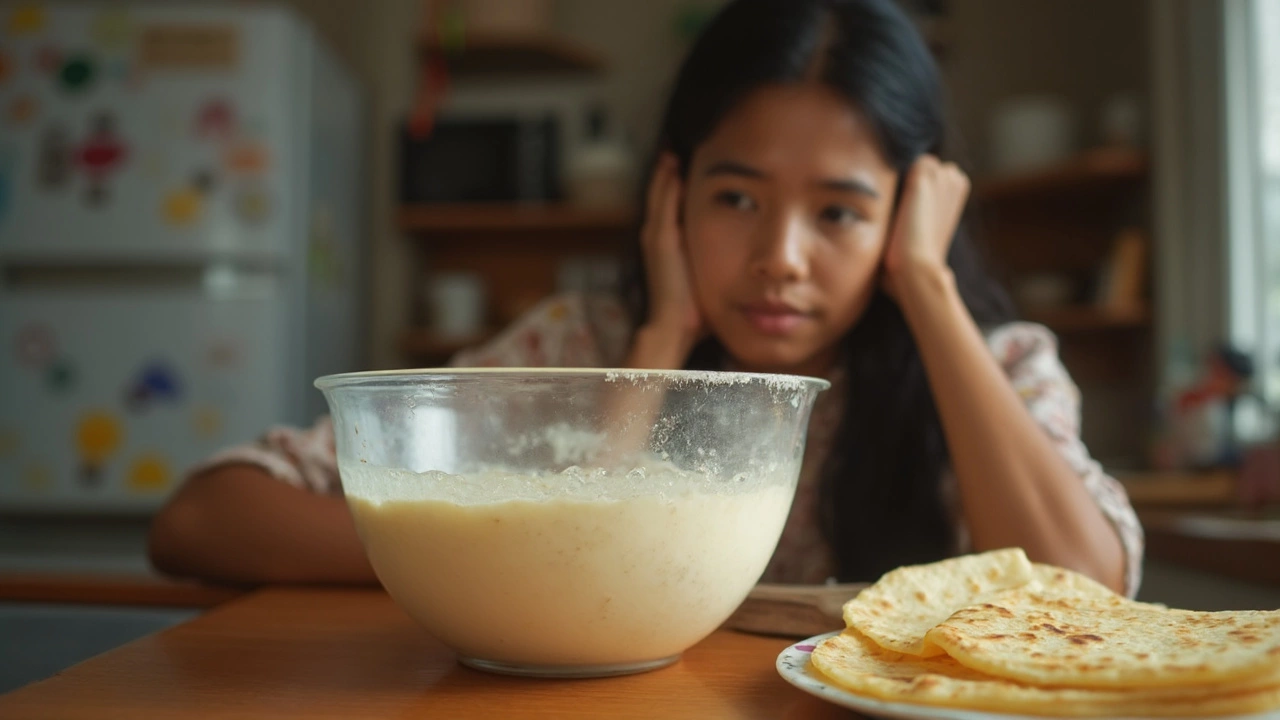Storing Dosa Batter Made Simple
When working with storing dosa batter, the act of keeping the fermented mixture ready for later use while preserving its taste and texture. Also known as dosa batter preservation, it lets you enjoy crisp dosas without grinding fresh rice and lentils each day. Dosa batter fermentation is a key factor that determines how long the batter stays good, and urad dal soaking sets the stage for a strong fermentation base.
Why the Right Storage Method Matters
Freshly ground batter needs a warm environment for the natural yeasts to multiply. Once it reaches the right level of sourness, you switch to a cool place to slow down the microbes. Moving the batter from a room‑temperature bowl to the refrigerator extends its life from a couple of days to a week or more. If you plan to skip a week, pour the batter into freezer‑safe containers and freeze it in portions. Thawing in the fridge overnight reactivates the fermentation without shocking the flavor.
Adding a pinch of baking soda before the first fermentation can speed up the process, as explained in our "Why Add Soda to Dosa Batter?" guide. The soda creates a more alkaline environment, which encourages the growth of certain bacteria that produce bubbles faster. This trick is handy when you’re short on time but still want airy, crispy dosas.
Container choice also impacts shelf life. Airtight jars or tightly sealed plastic boxes prevent the batter from absorbing fridge odors and keep unwanted microbes out. If you use a wide‑mouth jar, you can give the batter a quick stir before sealing to release excess gas and avoid pressure build‑up.
Watch for signs of spoilage: off‑smell, pink or blue mold spots, and a watery layer on top that doesn’t mix back in. When you see any of these, it’s safer to discard the batch. A little extra fermentation time after reheating can revive a slightly flat batter, but once the smell changes, it’s gone.
In short, proper storage—whether by refrigeration, freezing, or adding soda—keeps your dosa batter ready for a quick breakfast or dinner. Below you’ll find articles that dive deeper into each of these techniques, from the science of fermentation to step‑by‑step soaking tips.

Can You Use 2 Weeks Old Dosa Batter? Safety, Tips, and Surprising Facts
Wondering if that dosa batter that’s been sitting in your fridge for two weeks is still good? This article explores whether you can safely use old dosa batter, how to spot signs of spoilage, and what happens to taste and texture over time. Get practical storage tricks, rescue ideas for sour or over-fermented batter, and real kitchen advice that actually works. Save your effort, avoid food waste, and keep your dosas delicious with easy-to-follow guidance.
- Chutney Recipes (13)
- General (11)
- Healthy Living (11)
- Easy Indian Recipes (9)
- Chicken Curry Recipes (9)
- Healthy Indian Snacks (8)
- Paneer Recipes (7)
- Dal Recipes (7)
- Street Food (7)
- Dosa Recipes (7)
-
Basic Indian Dish: Mastering Simple Flavors
8 Feb 2025 -
Soaking Urad Dal Overnight for Perfect Dosa: Tips, Myths, and Science
2 Aug 2025 -
Dal vs Lentils: Key Differences Explained
29 Sep 2025 -
Street Food Etiquette in India: A Culinary Journey
22 Dec 2024 -
Why Is There Potato in Biryani? The Real Story Behind This Tasty Twist
19 Apr 2025
16.05.25
Kaia Binari
0